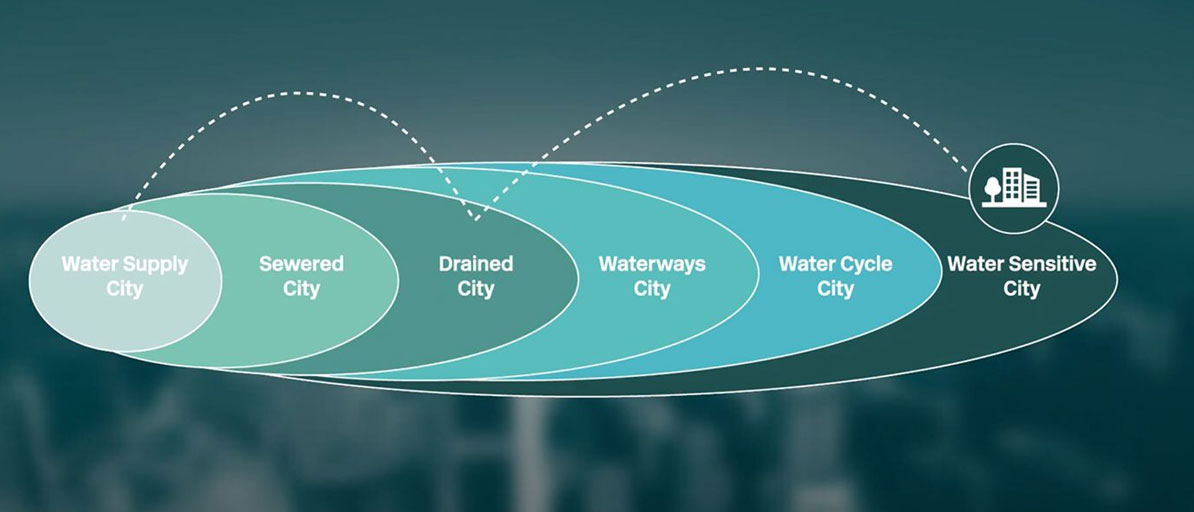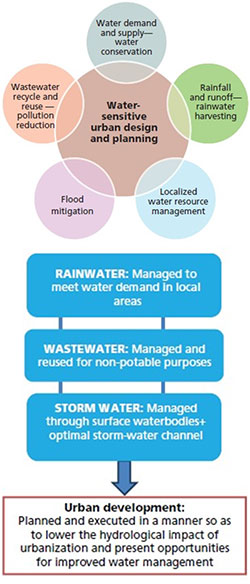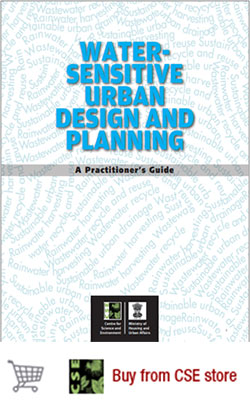What are water-sensitive cities?
Water-sensitive cities are geared towards a holistic management of the water cycle to deliver basic urban water services of supply and sanitation while mitigating flood risks and protecting and enhancing the health of the receiving waterways.
A water-sensitive city incorporates innovative infrastructure, design and governance solutions.
Water-sensitive urban design and planning (WSUDP) is an approach that integrates and optimizes the use of available water sources and completes the water cycle by incorporating the following in planning and designing:- Protecting local water bodies (lakes, ponds and wetlands) for supplementary water sources
- Stormwater management at public places, including open areas in cities through elements of landscape design (e.g., vegetated swales and buffer strips and bio-retention systems)
- Recycling and reusing wastewater naturally (low cost or low energy) and not treating it as a liability
- Augmenting water conservation approaches at various scales (buildings and campus)—i.e., by adopting water-efficient fixtures, xeriscaping, landscaping (i.e., planting native species) and using water-efficient irrigation methods—thereby minimizing load on the municipal supply system and groundwater sources. On-site water conservation with rainwater harvesting (RWH) is also important to reduce water scarcity
- Adding value to the social and ecological aspects of areas by planning and designing the built environment in accordance with community needs and water issues
- Integrating the urban water cycle by collaborating with practitioners of different disciplines to bring different perspectives and expertise
- Associating upcoming policies, regulations and approvals with WSUDP
The concept of a water-sensitive city is an urban water management approach that delivers benefits to enhance sustainability, liveability and resilience.
Urban water management transition framework

Source: Brown, R., Keath, N. and Wong, T., 2008, August. Transitioning to Water Sensitive Cities: Historical, Current and Future Transition States. In 11th International Conference on Urban Drainage (Vol. 10).

